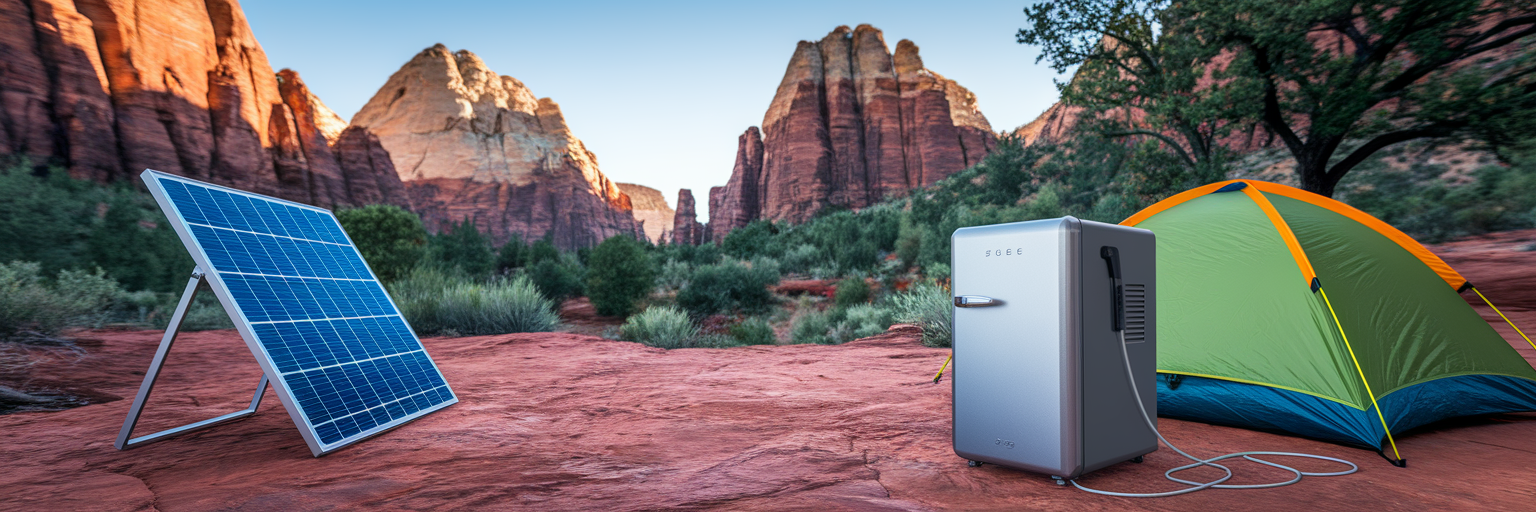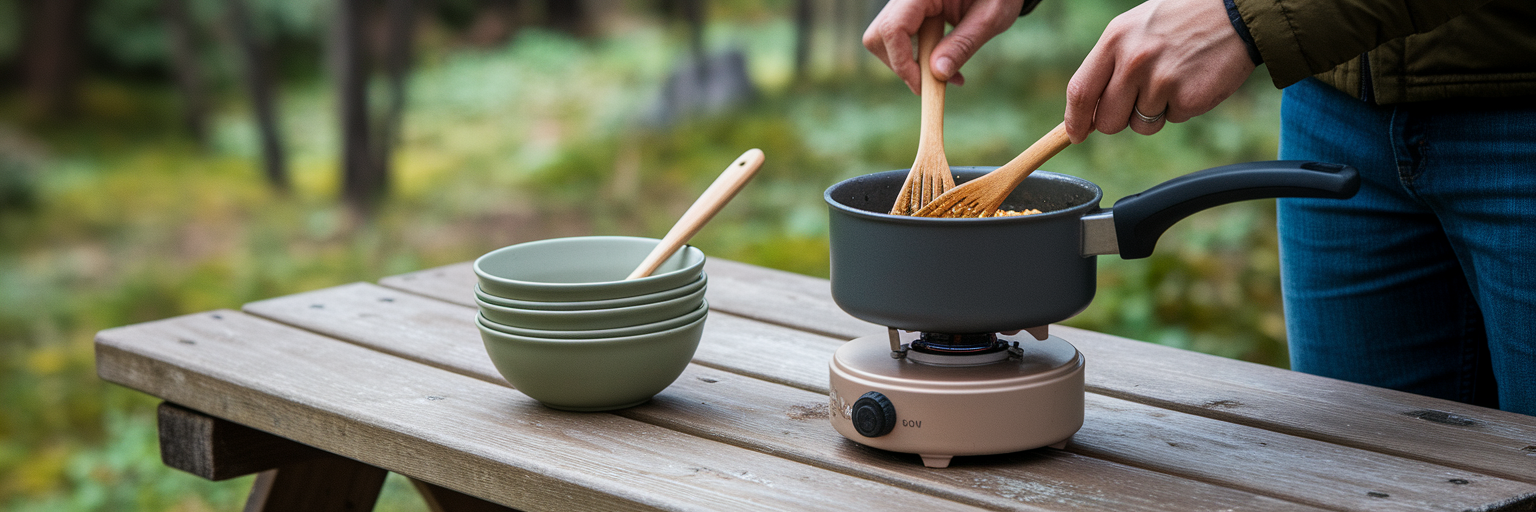This post contains affiliate links, many which go to Amazon and are Geo-Affiliate links to nearest Amazon store.
The days of choosing between comfort and portability in the great outdoors are quickly fading. Modern advancements mean today’s adventurers can enjoy amenities once reserved for home, transforming how we experience nature. But with so many options, how do you choose the right outdoor gear essentials? It comes down to three core principles that are no longer mutually exclusive: durability, portability, and energy efficiency.
Durability isn’t just about surviving a single trip. It’s about trusting your gear when you’re miles from the nearest town. Look for equipment built with materials like ripstop fabrics that prevent small tears from becoming major problems, or reinforced composites that absorb impact. A quick inspection of the seams and zippers often tells the whole story. Are they double stitched? Do the zippers feel robust or flimsy? This focus on strength without the extra weight is a major theme in modern equipment design, as highlighted in the Gear Patrol Outdoor Awards 2025, which recognized numerous products for their use of advanced lightweight materials.
Next, consider portability. This goes beyond just the weight of an item. True portability is about packability and multifunctionality. A collapsible silicone bowl takes up a fraction of the space of a rigid one. A tool that serves three functions means two fewer items in your pack. This smart design philosophy allows you to carry more capability without adding bulk, making this a comprehensive adventure gear guide for smarter packing.
Finally, energy efficiency is critical for any off-grid adventure. Low-draw appliances ensure you don’t drain your vehicle’s battery overnight. Many modern devices are also designed with solar compatibility in mind, giving you the freedom to recharge and stay powered for longer. These three pillars form the foundation for selecting gear that enhances your experience without weighing you down.
Keeping Provisions Fresh with Portable Refrigeration

With those core principles in mind, let’s look at one of the most impactful upgrades for any trip: portable refrigeration. Forget soggy sandwiches in a melting ice chest. Today’s portable outdoor devices offer reliable cooling that changes how you eat on the road. The two main options for US consumers are compressor-based refrigerators and thermoelectric coolers. Compressor models work just like your home fridge and are perfect for car camping and long road trips where consistent temperatures are a must. Thermoelectric coolers are lighter and less expensive, making them suitable for keeping drinks cool on a day trip.
When you’re comparing models, focus on the features that actually matter in the field. We’ve all felt the frustration of a dead car battery, so power consumption is a huge factor.
- Capacity: Measured in quarts or liters, this determines how much food and drink it can hold. A 45-quart model is a popular size for a weekend trip for two.
- Power Consumption: A low amp-draw is critical. Look for models with efficient compressors and good insulation to minimize battery drain.
- Durability: Your gear will get bumped around. Features like reinforced corners, sturdy handles, and a tough exterior are not just for show.
- Power Source: Ensure it’s compatible with your vehicle’s 12V DC outlet. Many units now also work with portable power stations, offering more flexibility.
The biggest challenge is power management. Pairing a portable fridge with a dedicated portable power station, especially one that can be charged with solar panels, creates a self-sufficient system for extended off-grid use. The takeaway is clear: for multi-day trips where food safety and cold drinks are a priority, invest in a compressor fridge. For casual day trips, a thermoelectric cooler will do the job.
On-Demand Comfort: Portable Water Heaters and Purification
While a cold drink is refreshing, a hot shower after a long day of hiking can feel like pure luxury. This is where portable water heaters come in, adding a new level of comfort to outdoor adventures. Most common are propane-powered tankless models that provide instant hot water for showering or washing dishes. Before buying, consider the flow rate, measured in gallons per minute, which tells you the water pressure you can expect. Also, check the temperature rise—how many degrees it can heat the water above its starting temperature—and look for essential safety features like an auto-shutoff if the flame goes out.
However, it’s important to maintain a balanced perspective. A portable water heater is a fantastic comfort item, but it’s not a necessity. Clean drinking water, on the other hand, is non-negotiable. Before you invest in a heater, ensure you have a reliable water purification system. This could be a simple pump filter, a convenient gravity filter for basecamp, or a UV sterilizer for quickly treating smaller amounts of water. Each has its place depending on your trip style.
So, when is a water heater a worthwhile investment? For those building a comprehensive basecamp with amenities like our reviewed outdoor movable kitchen cart, adding a portable water heater completes the setup for ultimate convenience. It’s ideal for family car camping or longer overland trips where the extra weight is manageable. But if you’re a backpacker counting every ounce, it’s better to save the space and stick to the essential purification tools.
The Modern Camp Kitchen: Compact and Efficient Cooking

The camp kitchen has evolved far beyond a simple fire pit and a cast-iron skillet. The best camping equipment for cooking today is all about efficiency, versatility, and compact design. You’ll generally find two types of stoves. Integrated stove systems are marvels of engineering, designed to boil water in minutes, making them perfect for backpackers who need a quick meal of dehydrated food or a hot coffee. In contrast, standalone burners offer more culinary freedom, with better simmer control for actually cooking a meal rather than just heating water.
Fuel type is another key consideration. Have you ever struggled to get a canister stove lit in the cold? Canister fuels are incredibly convenient and clean-burning in moderate weather, but their performance drops in freezing temperatures. Liquid fuel stoves, while requiring more maintenance, perform reliably in extreme cold and at high altitudes, making them a top choice for serious mountaineers. This choice directly reflects the kind of adventures you plan to take.
Innovation in cookware has also made packing easier. Nesting pot sets that fit together like a puzzle, collapsible silicone bowls that flatten to the size of a plate, and multi-purpose outdoor travel tools like a spork with a serrated edge all help you do more with less. For a closer look at how these compact cooking systems perform in the field, check out our video reviews. When choosing your setup, look for fuel efficiency, wind resistance, and good simmer control in a stove, and prioritize durable, non-stick surfaces for cookware to make cleanup less of a chore.
Matching Your Gear to Your Adventure Style
Ultimately, the right gear is the gear that fits your specific adventure style. A setup that’s perfect for a weekend at a state park campground would be impractical for a week-long trek through the mountains. To make it easier, we’ve broken down some common adventurer profiles and the gear that typically aligns with their priorities. This table serves as a practical starting point to help you build a kit that works for you, not against you.
| Adventurer Type | Key Priority | Recommended Gear |
|---|---|---|
| The Weekend Car Camper | Comfort & Convenience | Large compressor fridge, portable water heater, multi-burner stove |
| The Backcountry Hiker | Low Weight & Packability | Water filter/purifier, integrated canister stove, minimalist cookware |
| The Road Tripper / Overlander | Durability & Efficiency | High-quality compressor fridge, portable power station, robust cooking gear |
This table provides a starting point for building your kit. Your final choices will depend on trip duration, group size, and personal comfort preferences.
As the table shows, the weekend car camper can prioritize comfort with larger, more powerful items. The road tripper needs a balance of durability for long-term use and efficiency to live off-grid for extended periods. For the backcountry hiker, every ounce counts, and choosing the right pack to carry these ultralight items is just as important as the gear itself. Understanding these trade-offs is the key to assembling a kit that feels empowering, not burdensome. No matter your adventure style, making informed choices is key. Explore comprehensive reviews and recommendations on Shopping Dragons to find the perfect gear for your next trip.

